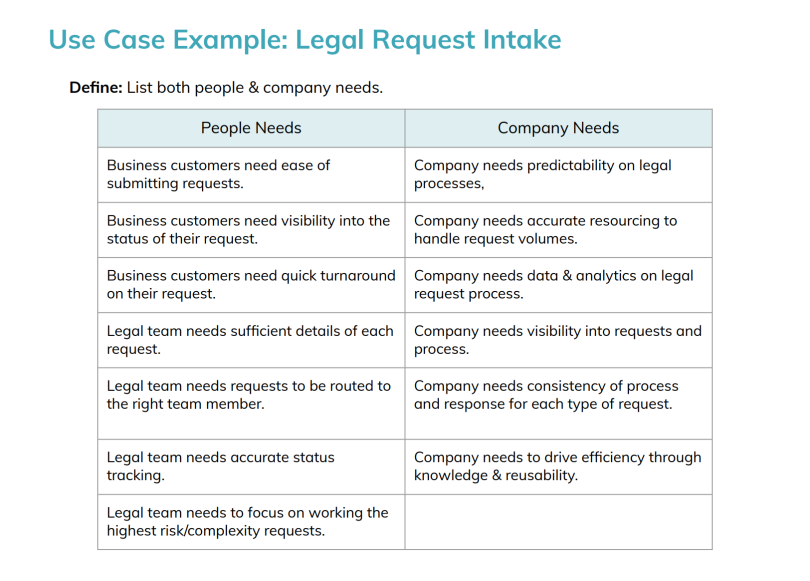Alex Goryachev has led change initiatives at some of the largest companies in the United States from IBM to Cisco to Pfizer, but he learned his most valuable lesson in change management while working as a music promoter.

At the time, Goryachev’s job involved managing all of the pieces that go into making a concert happen each night, from admissions to light design to production. When each piece functions smoothly, “it touches your soul,” Goryachev said. And he wanted to be the one to facilitate that experience for concertgoers.
So, he went from crew to crew with a list of changes he thought would modernize the process and create a better experience for fans. And with each, he would get into lengthy arguments that left everyone involved angry. Eventually, an engineer and lighting designer he worked with took him aside and offered a piece of advice.
“He said, ‘Alex, do you want to be right? Or do you want to achieve your goal?’” Goryachev recalled.
What Is a Change Management Process?
For a moment, Goryachev didn’t understand the question. He thought the changes he came up with were the only way to improve the fan experience.
But after a period of reflection, Goryachev realized what his colleague was really saying. Change management, which is the process of identifying a problem and then creating a plan to implement the solution, isn’t about having all of the answers and telling people what to do. It’s about letting go of your ego and doing what’s right for others, said Goryachev, who is a digital transformation leader and author of the book Fearless Innovation.
“When you think about the most successful project managers and leaders, they’re facilitators,” Goryachev said. “They’re highly invisible, but we all remember those people because they empowered us and others to make a change, be it in the company or in our careers.”
Building a change management process requires developing relationships with the stakeholders involved, listening to their needs and getting their buy-in. From defining the problem you want to solve to identifying a solution and implementing it, change needs to be created with others.
6 Tips for Building a Change Management Process
- Change starts with people. Incorporate stakeholders to identify the best solution to an issue and get buy-in to the change.
- Take into account how stakeholders will be impacted by the change. Make sure employee benefits and needs are considered alongside the business benefits.
- Measure outcome not activity. Base the project’s success on how close it gets your team to its goal, not how many people are using the new system.
- Break your change management plan into smaller milestones. Stay agile and adapt your plan at each stage.
- Continue to reinforce the benefits after the change launches. Benefits-led conversations put the change in a positive light even if there are issues.
- Celebrate the change. Shine a spotlight on the work employees going through the change had to put in to make the project successful.
Change Starts With People
If there’s one constant in business, it’s change. Whether a company is growing or a process becomes out of date, there’s always a workflow, software or process that needs to be updated.
One of the biggest mistakes Goryachev sees companies make, however, is deciding on those changes in a boardroom. While executives might be able to recognize that a problem needs to be fixed, they don’t have the proper insight into what it will take to correct the issue.
The ones who do are the people who will be asked to change, Goryachev said. And without their buy-in, that expensive software or new workflow will end up ignored and the problems you planned on solving will persist.
That’s why the first step in any successful change management solution is to bring the stakeholders together and gather their feedback on the problem and proposed solution, Goryachev said.
“Change needs to be defined together with all of the people impacted,” Goryachev said. “There needs to be a clear statement of the problem and what we’re trying to achieve. … It’s essential that this is decided with the stakeholders and input is solicited.”
At the digital innovation consulting company Endava, Chief Information Officer Helena Nimmo engages all stakeholders at the start of her planning stage for internal projects. For any change to be successful, people need to understand the benefits of that change and you have to create a compelling vision, Nimmo said. The only way to do that is to speak with the people involved.
“Change needs to be defined together with all of the people impacted.”

Nimmo starts by creating a stakeholder map to understand who will be affected by the project she’s planning. She segments them into various user groups, including by role, department and age (as each generation adopts technology in different ways), Nimmo said.
From there, she’ll meet with the different stakeholders involved and solicit their input on various potential solutions to the given problem. She’ll also try to understand why the participants are drawn to a particular solution and how they think it’ll benefit them.
Those conversations not only help her identify the best solution, but also help her understand what the benefits of the project will be for each team. That insight shapes how she will communicate the project and measure its success.
“The biggest learning I’ve ever had is to make sure you build the … conversations right into the beginning,” Nimmo said. “If you do that right from the beginning, when you come to implement [the change], it’s much easier and better accepted because it’s not a surprise anymore.”
If the project is larger in scope, Goryachev suggests sending an anonymous survey and publishing the results — good and bad. The key is everyone has an equal voice and the process is transparent, Goryachev said. If you don’t, you’ll end up with what’s called “shadow IT,” or a process used by other departments as a workaround to your proposed solution.
Take Into Account How the Stakeholders Will Be Affected by the Change

When Sagi Eliyahu worked as the VP of engineering for a fast-growing startup, he noticed a disconnect in how change was handled and how it was received.
In most cases, a team would identify a workflow inefficiency and then a solution would be designed to fix that inefficiency. While that made sense in a vacuum, the users didn’t always adopt the changes. The reason — it didn’t fit into the way they worked.
The problem Eliyahu identified was that change often took into account the company’s return on investment but not the users. For change to be adopted, it needs to be organic to the way people work.
Eliyahu went on to co-found Tonkean, a startup that aims to automate business processes and reduce the need for change management. But to solve the issue he identified, he recommends leaders start each change initiative with a simple two-pillar exercise. On one side write “company,” on the other “people.”
On the company side, Eliyahu suggests creating a list of everything that’s important from a company perspective in solving this issue. If the problem is that it’s taking too long for contracts to go through legal approval, the list might include things like improving turnaround time, maintaining privacy and contract compliance.
On the people side, list all of the different personas who play a role in the contract process, why they’d care about a solution and their concerns. It’s important to include both people who have a direct role in the situation, like sales and the legal team for this example, but also people indirectly involved, Eliyahu said.

“The idea of doing it side-by-side is to remind yourself that every need you have from a company perspective is going to have an impact on the people involved with it,” Eliyahu said. “And that will help you ask yourself, ‘Is that something I want?’
The simple exercise ultimately helps you identify situations where the change doesn’t match with the user’s workflow, he added.
Measure Outcomes, Not Activity
Once everyone has had an opportunity to voice their opinions and everyone generally agrees on an approach, it’s important to determine how you’ll measure the project’s success.
This is where a lot of companies make the mistake of evaluating their change based on activity metrics, Goryachev said. While it’s important to know how many people are adopting the new workflow or software, it doesn’t say anything meaningful about how successful the change was.
It’s more effective to establish your metrics around the outcomes you want to see. Goryachev suggests meeting with stakeholders and asking them what outcomes they expect from the change and how they’d measure it. If you’re releasing an automated customer data input platform, one metric might be the amount of time it’s saving sales reps.
“If you think about change, you’ve probably heard people say, ‘Why did we waste so much money on this?’”
Don’t be afraid to share with your teams the cost of the project and how the company came to that total, too, Goryachev said.
“If you think about change, you’ve probably heard people say, ‘Why did we waste so much money on this?’” Goryachev said. “So you’re getting people to buy into the outcome metrics, getting everybody to agree [on the change] and then understanding the cost. This achieves joint ownership [in the solution].”
Once you’ve established the metrics, it’s important to publish and communicate the results with the company early and often. At Endava, for example, Nimmo’s team maintains a dashboard for each project that anyone in the company can access to learn about how the project was created, its benefits and shortcomings.
It also sends out regular project updates via email to the entire company, hosts a monthly meeting to discuss the benefits of the project with the stakeholders involved and runs workshops led by users of the new system.
People don’t like change because it disrupts their status quo, Goryachev said. They’re still responsible for delivering on their day-to-day responsibilities. As long as they can see how the change benefits their work and the process doesn’t interfere with their responsibilities, they’re more likely to trust the process.
Break Your Change Management Plan Into Smaller Milestones
There’s often an assumption that change is hard and expensive, but it doesn’t have to be that way.
Change initiatives can seem hard and expensive when a company tries to roll out everything at once, Goryachev said. While you may have agreed on a plan with your stakeholders, it’s still just a theory. Committing all of your resources to execute a plan that may not work only sets you up for failure.
Instead, he suggests breaking the plan into smaller milestones.
Start with a pilot, Goryachev said. See what works and what doesn’t, and then take that feedback and adjust your solution. Once you find an approach that works, expand it to a larger user base and keep adjusting.
“This creates two things: One you can adjust [your plan]; and [two] is it gets others very interested. They’ll want to be part of the pilot,” Goryachev said. “So this creates the demand for change and interest in change versus resistance.”
Eliyahu also recommends taking a modular approach to your solution. One-size-fits-all platforms may solve your problem, but they take a long time to learn and are expensive to adopt. They’re also difficult to adjust when your company goes through another change.
“When it comes to the design and architecture of your solution, think about it as Lego blocks … versus one-size-fits-all.”
Instead, he suggests looking at what processes you don’t want to change, what’s likely to change and where you can limit change.
If he’s building a solution to reduce contract turnaround time for sales, and the reps are happy with the current process of emailing the legal team, he may remove sales from the change equation. Instead, he might focus on a solution to streamline contract approval for the legal team without changing anything for sales.
This limits the number of people who need to change and will be quicker to adjust in the long run, Eliyahu said.
“When it comes to the design and architecture of your solution, think about it as Lego blocks … versus one-size-fits-all,” Eliyahu said. “Some parts might break and you’ll need to replace them, but it’s much cheaper, much faster and much easier to do that.”
Continue to Reinforce the Benefits
Change management doesn’t stop the moment a project launches. Not everyone will be happy with the solution and users will be quick to blame a new process or software the moment something goes wrong.
That’s why Nimmo tracks the participation status of users within her stakeholder map. While activity engagement won’t tell you if your project is successful, it can be a helpful barometer for how it’s being received. To track participation, a change manager and user experience manager will observe software usage and talk with team members to looking for any indications that engagement is down.
If one of the users or a group of users stops using the new system or software, they’ll turn from green to amber, indicating concern.
“If you look at the benefits and focus on the benefits, you’re able to see the red flags before they become red flags.”
When that happens, Nimmo suggests having an open and honest discussion about what’s going on. Sometimes the issue has nothing to do with the project; it could just be that the person is consumed with another task. If the issue does have to do with the new project, then the question you need to answer is, “why?,” Nimmo said.
“It’s more open-ended because you’ll also find that people don’t even realize they’re not engaged or that they’re not happy with the initiative,” Nimmo said. “It’s very much about that open-endedness, that transparency and being willing to listen.”
But you can also mitigate some of those issues by continuously reinforcing the benefits of the project even after it launches, Nimmo said. Activities like hosting meetings to discuss the project’s benefits and progress each month put it in a positive light. When something does go wrong, the focus won’t just be on the shortcoming.
“If you wait until you start getting that feedback rather than ... having a benefits-led conversation, you’ve created a change hump that you need to get over,” Nimmo said. “If you look at the benefits and focus on the benefits, you’re able to see the red flags before they become red flags.”
Those conversations also allow you to keep improving the new system. When the benefits stop coming, you’ll also know it’s time to plan your next change, Nimmo said.
Celebrate the Change
No change management process is complete without celebration, Goryachev said. The celebration isn’t for the change team, however, it’s for the employees involved in the project.
Goryachev still remembers the advice he received during an interview for a project manager role. The interviewer asked him how he’d manage the company’s change project consolidating 15 databases into one. Goryachev gave him a textbook answer about how he’d manage the change.
“He looked at me and said, ‘That’s kind of right. But I want you to remember, if this change is successful, you’ll get to share credit with hundreds of other people that made it happen. If it fails, it’s all your fault,’” Goryachev recalled.
Goryachev realized that the only way change is going to succeed is if everyone is on board and it’s created together. It’s only natural then, that the success of the project is celebrated with everyone.
“We all want change that makes us feel better and gets us to a common goal when we believe we’ve added value toward something bigger than us.”
So whenever he works on a project, he makes sure to spotlight an individual stakeholder or highlight a team in a company meeting. And when he does, he takes care to show their journey and what they went through to make that change happen.
“We all want change that makes us feel better and gets us to a common goal when we believe we’ve added value toward something bigger than us,” Goryachev said.




